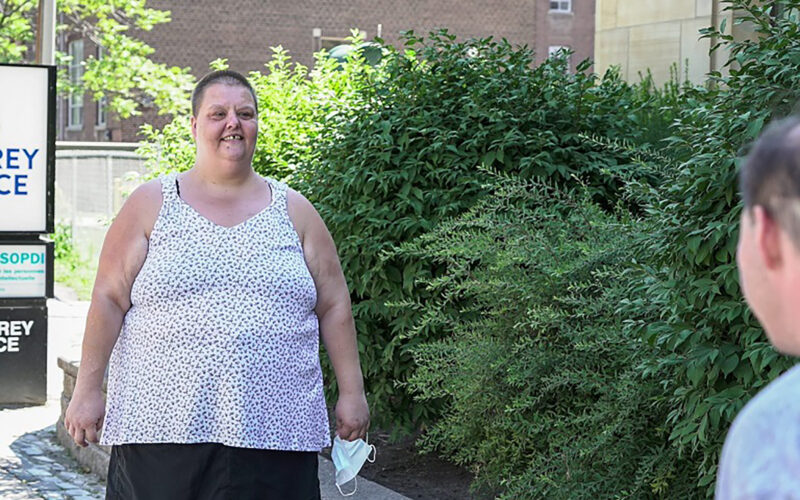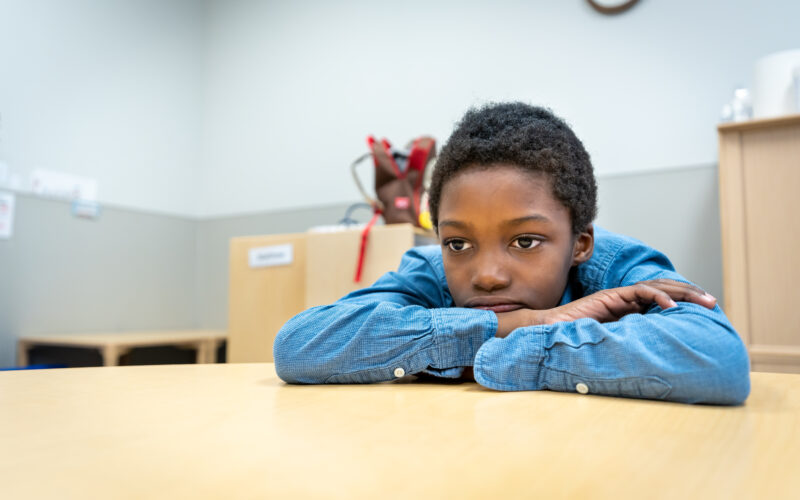There’s no question that being a caregiver to a child with urgent needs can be challenging. If you sometimes find yourself dealing with big emotions, rest assured that you’re not alone. Maybe you frequently experience high levels of stress. Or perhaps you’re suffering from anxiety or depression. Chances are you devote a lot of time and energy to advocating for your child and getting them the supports they need. This is important, but it’s also important to take care of yourself. This means taking steps to manage feelings of stress, anxiety or depression and getting the help you need. By meeting your own needs, you’ll be in a better position to meet the needs of your child. Families experiencing stress, anxiety and depression related to challenging behaviours may also benefit from our Urgent Response Services.
Know how to recognize the signs
You may feel like you’re on autopilot, doing whatever you need to do to support your child and get through the day. This can mean you might not notice signs of a potential mental health issue. Here are some things to look out for that may indicate you (or another parent or caregiver in your household) is experiencing anxiety or depression.
Signs of anxiety:
- Finding it hard to get out of bed
- Difficulty sleeping
- Difficulty concentrating
- Constant feelings of worry
- Physical symptoms, like headaches or feeling light-headed
Signs of depression:
- Withdrawing from family and friends
- Losing interest in activities you normally enjoy
- Changes in sleep patterns
- Changes in appetite
- Feelings of hopelessness
- In extreme cases, feeling as though you want to hurt yourself
Tips for maintaining your mental wellness
Ask for help: You may have trouble asking for help or accepting it when offered. Or you may be so busy accessing support for your child that getting support for yourself takes a back seat. It’s important to acknowledge you can’t do this alone. If someone offers help, take them up on it. If you don’t have support, there are services you can access.
Move your body: Getting exercise is good for your body and mind. Try your best to incorporate physical activity into your week and even into each day, if possible. This doesn’t need to be a long workout session at the gym (unless this makes you happy). Even a brief walk can help you keep your stress levels in check.
Talk it out: Talking about your feelings can help you identify and cope with them. Find a trusted friend, family member or a healthcare professional you feel comfortable with. It’s important to avoid keeping your emotions bottled up.
Don’t sweat the small stuff: A long to-do list can be overwhelming at the best of times. If you’re grappling with stress, anxiety or depression, focus on priority tasks that need to get done. Anything that isn’t urgent can be dealt with later.
Eat mood-boosting foods: Healthy foods can have a positive impact on your mood. Some foods have even been linked to helping lower levels of cortisol. This is known as the “stress hormone” because it’s released when you’re feeling stressed. Foods that can help lower cortisol levels include avocados, walnuts, salmon and bananas, among others (see the full list here.)
Prioritize sleep: Manyof us cut corners when it comes to getting enough sleep, even though we know how important it is. If your child has a sleep disturbance, it may not be possible for you to get uninterrupted sleep at night. If this sounds like your household, create a night time routine for yourself and your child. Also consider having a trusted friend or family member support at night, when possible.
Build a support network: Having people you can count on, who understand what you’re going through, can help you feel less alone. If you’re having trouble building a support network, Surrey Place can help you connect with other caregivers or parents. You can also find support groups online, including Facebook groups.
Consider medication if needed: If you’ve tried a variety of strategies and nothing seems to be working, you may want to consider medication. This can be a good short-term solution during a particularly stressful time. Your family doctor should be able to prescribe something that will help.
Self-care versus coping
Different, yet equally important: A self-care habit and a coping strategy aren’t the same things. But both are important when it comes to dealing with stress, anxiety or depression. A coping strategy is something you use in the moment when you feel stress levels rising. Think deep breathing or squeezing a stress ball to calm down.
Incorporate daily wellness rituals: Self-care refers to wellness habits that make you feel good. Think of this as a proactive way to manage stress. Self-care habits will be different for different people. For you, it might be a quiet cup of coffee in the morning. For another person, it might be a long bath in the evening. For someone else, it could be five minutes of meditation before going to bed.
Carve out time for yourself: Think of ways you can sneak in time for daily self-care. Maybe that means waking up a few minutes earlier when your household is quiet. Or maybe it means giving your child some limited screen time (without the guilt) while you take time for yourself.
How Surrey Place can help
If you are a caregiver with a child who exhibits high-risk escalating behaviours that require an urgent response, like violent thinking, aggression, or property destruction, you may be eligible for Surrey Place’s Urgent Response Services. This program can be accessed through the Ontario Autism Program (OAP), which provides funding and services for children and youth under 18 years of age with autism, along with their families and caregivers.
About Urgent Response Services
This resource was written with support from staff in Urgent Response Services. Urgent Response Services are part of the Ontario Autism Program. They were created to support children or youth with an emerging urgent need. Surrey Place leads Urgent Response Services for Toronto Region in partnership with 2-Spirited People of the 1st Nations, Community Living Toronto, Family Service Toronto, Geneva Centre, Holland Bloorview, Kerry’s Place, Lumenus, SAAAC, SMILE Canada and Strides Toronto.
Resources
- If you’re looking to connect with other parents, Surrey Place’s Foundational Family Services can help. At Surrey Place we also offer Caregiver Connect, a weekly support group that connects caregivers of children with autism spectrum disorder with other caregivers. Check Foundation Family Services for our next registration dates.
- If you are experiencing anxiety or depression, the Centre for Addiction and Mental Health (CAMH) offers services that may be able to help you. Please note you must have a referral form completed by a physician or nurse practitioner for most mental health services at CAMH.
For support for a child with autism spectrum disorder whose needs are not urgent, please visit Surrey Place’s Autism Services page.


